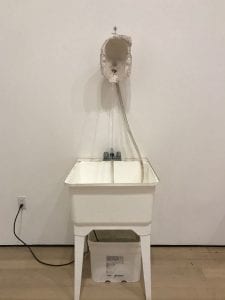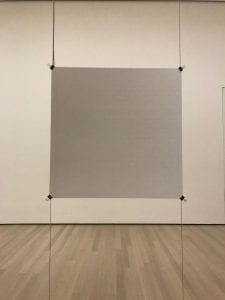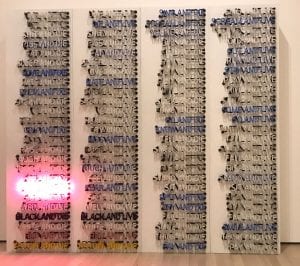I went to see Bruce Nauman at the Moma. The first piece I saw as I entered the exhibit were two sinks connected to the inverse figure of a mold of a person’s face which spits water on the outer part of the sculpture but because of the placement of the face, I assumed it was an abstract representation of the human anatomy looking from the inside. It was interesting because the tube looked as if it served as an esophagus leading all the way down to the bladder which collected the “pee” into the tub at the bottom. There was a white mold and a reddish purple-reddish mold. I’m not sure what the symbolism in the colors was; perhaps its a commentary on race.
There was also a large circular structure that looked like an abstracted version of a colosseum. I was not sure what to make of it, the figure didn’t appear to be entirely finished and the viewers’ interaction with space was limited to only walking around it.
Once I entered the exhibition there were some large fiberglass sculptures that looked like they belonged on a construction site. Nauman had a lot of mobile-like pieces. Using a similar material, he created a mobile dining room where there were chairs hanging from chords and the table was a set of steel rods meant for construction purposes.
Perhaps one of the most interesting pieces in the exhibit was an interactive piece that the participant walked through. There were several white square panels held up by small back paper clips when walking through the center of the panels, different voices saying the days of the weeks ranging from male to female to child’s voices.
I wasn’t quite sure who Bruce Nauman was until I saw the neon lights with the flashing words and then I remembered that I had seen one of his pieces with the peace sign at the Art Institute of Chicago a few years back. The flashing words in this exhibit were in a rectangle formation and only one phrase lit up at a time. There were four sections to it that interchanged between the last word being “LIVE” and “DIE”. It felt to me as it was a kind of game like Russian Roulet, whatever the lights landed on was the viewers’ destiny. Every once in a while, all of the letters would light up which made the piece seem like a kind of carnival game that lit up after the player won.



